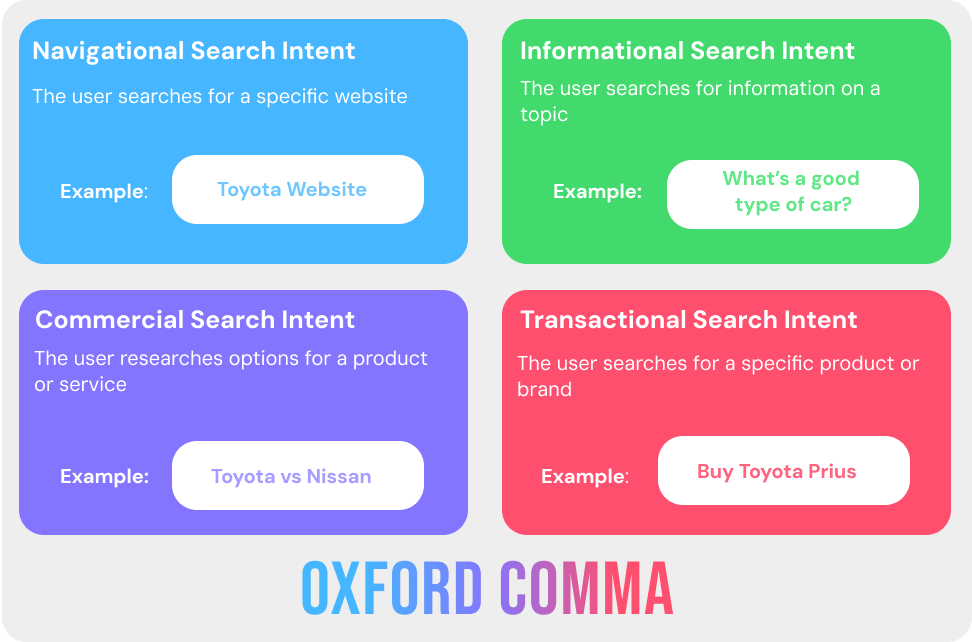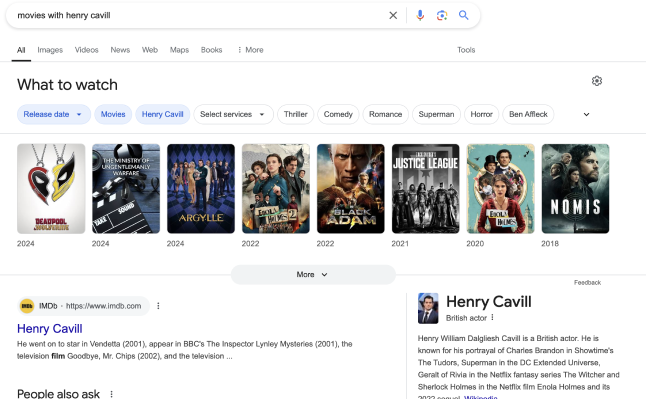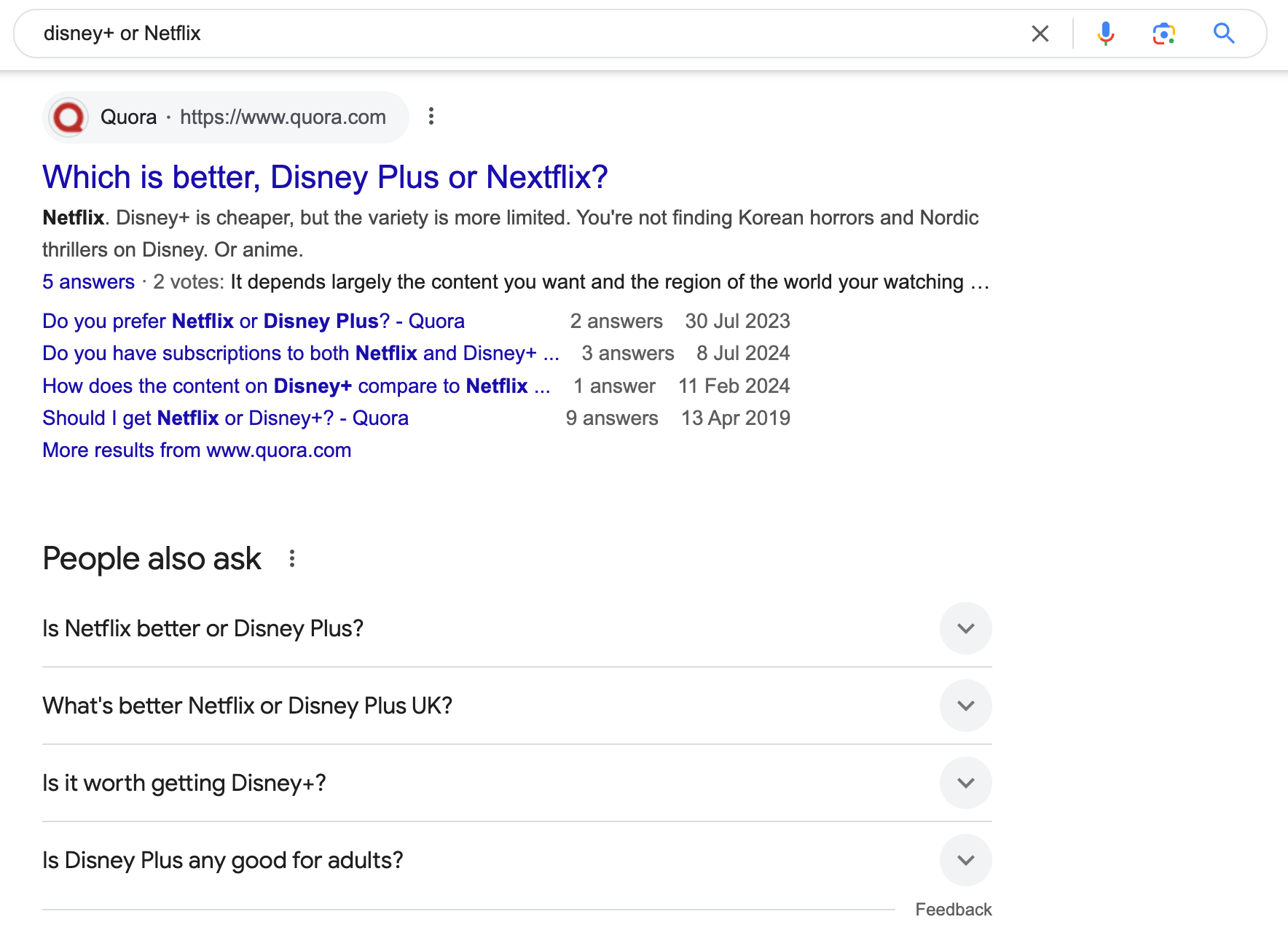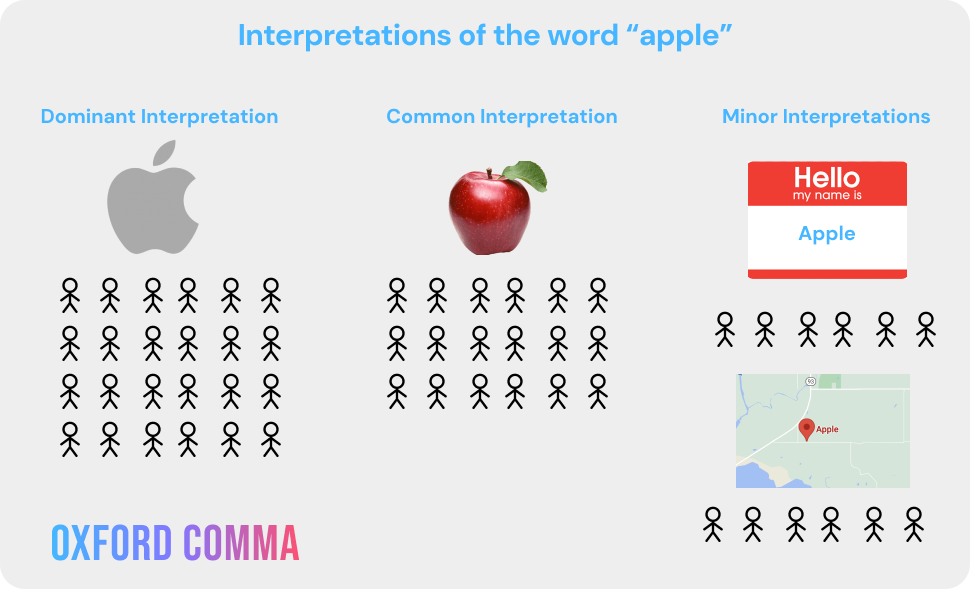Our Guide to Search Intent
Search intent is the reason why someone searches for something in a search engine like Google.

What is Search Intent?
Search intent is the reasoning behind a user typing a particular query into a search engine. For example, if someone types “garden gnomes” into google, the odds are they want to see or purchase a garden gnome. There are a range of different types of search intent, which we will explore.
Why is search intent important in SEO?
The main goal of search engines is to provide relevant results for users, so understanding search intent can impact your ability to rank in search engine results pages. Google in particular has put a lot of effort into interpreting the intent behind the search queries used in search. You can take a look at Google’s Search Quality Evaluator Guidelines, they have a whole section on user intent and how to identify different intent types. If you want to make sure that your page is ranking in Google, you need to make sure that your pages satisfy the correct search intent behind the keywords that they are targeting.
The Four Types of Search Intent
There are four different types of Search Intent - Navigational, Informational Commercial and Transactional. The diagram below details briefly the difference between these types of intent, but let’s explore each of them further too.

Navigational Intent
With navigational intent, the user wants to find a specific page. Unlike the other intent types, users in this case already know what they are looking for. Examples of keywords for navigational intent could include, “costa”, “gmail login”, “marks and spencer”. As you can see, keywords with navigational intent are generally branded, so you need to be sure that your target audience can find you as easily as possible when using your brand name. Luckily this is one of the easiest things to do in SEO.
Informational Intent
Informational intent implies that the user is looking for information, to learn something new. These searches often use one of the five key questions, ‘how, who, what, where or why”. Examples of these types of keywords could be, “movies with Henry Cavill”, “what is seo”, “how to crochet” or “when to plant bulbs”. Google often tries to answer these questions directly in the results page:

However, for most informational queries the most common content type to appear is a blog post, which is why having an up-to-date blog can be a key part of your SEO strategy, as long as you’re targeting the right terms for your audience. By targeting informational keywords you can improve your visibility, by providing answers you build trust with your readers and therefore also bring your business potential new customers.
Commercial Intent
Commercial intent involves keywords that searchers use when they’re doing research before a purchase. This intent lies between informational and transactional intent, the user has a vague idea of what they want but are not quite ready to make a purchase. Examples of keywords with commercial intent include, “best indoor plants for dark rooms”, “new iphone review”, “disney+ or netflix”. These search results quite often include independent reviews, which is why it can sometimes be difficult to rank for some of the commercial keywords that are relevant to your brand.

Transactional Intent
Transactional search intent means users want to do something specific. This type of intent is not just restricted to purchases, for example, a transactional search might want to download something in particular or sign up to a newsletter. Examples of transactional intent could include, “price of macbook”, “yoga classes near me”, “oxford comma digital newsletter”, “watch harry potter films”. This type of search intent is the one most likely to convert to custom.
Query Interpretations
There are many words which have an overlap in meaning. This can pose an issue when using them within search queries as search engines may not know which iteration of the word that the user intends. For example, “apple” could mean the tech company or it could be the fruit. These are named in sections by Google, into “dominant interpretations”, “common interpretations” and “minor interpretations”. See the diagram below for clarification.

Whilst search engines are aware that users who are searching with these various interpretations are more likely to be searching for those in the ‘dominant’ category, Google in particular try to take into account other factors than just popularity, for example, if a user were to search ‘Apple’ whilst residing in Apple, Oklahoma, it’s more likely that they would be shown a map of the place first, rather than the tech company website.
When creating your content it’s important to note what the keywords people are searching for, as well as the search intent of your audience. For example, if your post or page is informational then make sure you are targeting informational keywords and that you are providing content that helps people make an informed decision whilst also leading them to your conversion journey pages.

